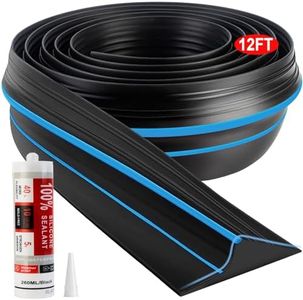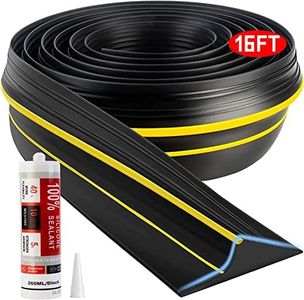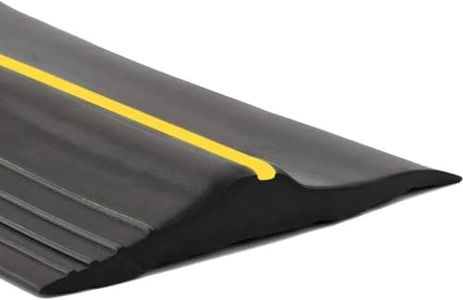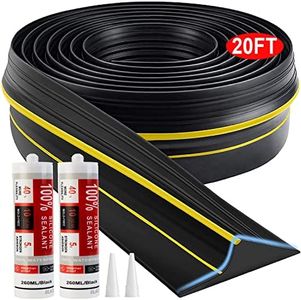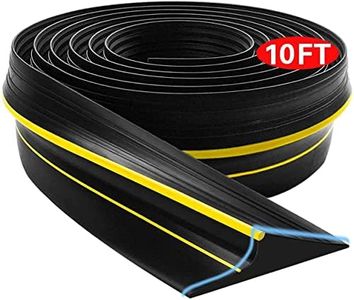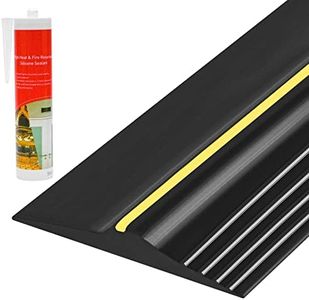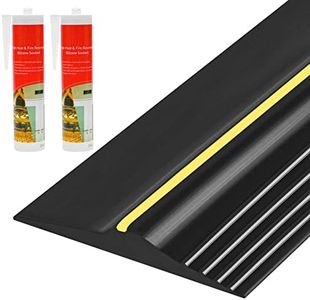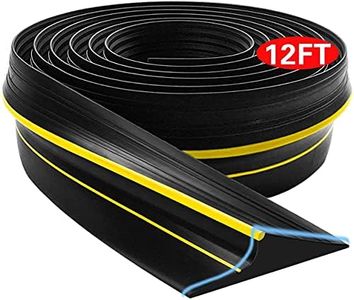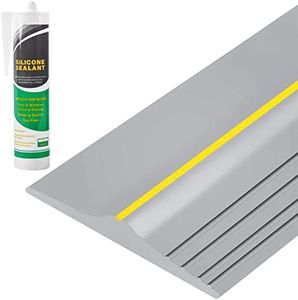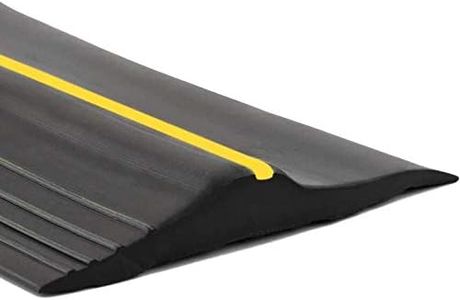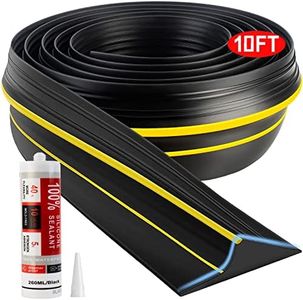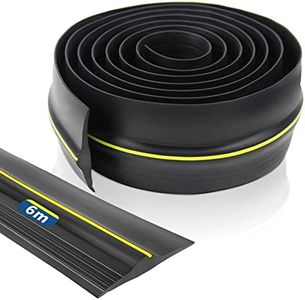We Use CookiesWe use cookies to enhance the security, performance,
functionality and for analytical and promotional activities. By continuing to browse this site you
are agreeing to our privacy policy
10 Best Garage Door Thresholds
From leading brands and best sellers available on the web.By clicking on a link to a third party's website, log data is shared with that third party.
Buying Guide for the Best Garage Door Thresholds
Choosing the right garage door threshold can make a big difference in protecting your garage from water, debris, insects, and energy loss. Think of the threshold as the border at the bottom of your garage door opening—it creates a seal between the floor and the door, making your garage cleaner, drier, and often more energy-efficient. When shopping for a threshold, focus on what you most need to prevent (like water, drafts, or pests), the kind of garage floor you have, and whether you want something easy to install or extra heavy-duty.MaterialThe material of a garage door threshold determines its durability, sealing capability, and resistance to chemicals or temperature changes. Thresholds are commonly made from rubber, vinyl, or aluminum. Rubber is flexible, offers great sealing, and is easy to install, while vinyl is similar but may be stiffer or more resistant to weathering. Aluminum is more rigid and durable but may require more effort to install. If you need something strong for heavy garage use or exposure to harsh chemicals, go for aluminum or a high-quality rubber. For typical residential use, rubber or vinyl is usually sufficient.
HeightThreshold height affects how well it blocks water, leaves, and debris. Low-profile thresholds (around half an inch or less) are less noticeable and easier to drive over but might not completely block heavy rain or flooding. Medium-height thresholds (half an inch to an inch) provide a good balance for most garages, blocking water and dirt effectively while still allowing easy entry and exit. Tall thresholds (over an inch) offer maximum protection from water and debris but can make driving in and out slightly less smooth. Consider weather conditions in your area—if you have heavy rain or frequent flooding, a higher threshold may be better, but if you need smooth driving access, stick with a moderate height.
LengthThe length of the threshold needs to match the width of your garage door opening. Garage doors come in various standard widths, but always measure your opening to be sure. Thresholds can sometimes be trimmed to fit, so it’s okay if yours is a bit longer than necessary. Choosing the right length ensures a tight seal from end to end, preventing gaps where water or pests could enter.
Installation MethodThe installation process varies with different thresholds. Some thresholds use adhesive to stick directly onto your garage floor, requiring little more than a clean surface and some basic tools. Others may need to be screwed down or use more heavy-duty adhesives. If you want an easier, do-it-yourself project, look for thresholds labeled as peel-and-stick or with simple adhesive installation. If you need maximum strength or your floor is uneven, choose one that allows for more secure attachment methods.
Weather and Chemical ResistanceGarage door thresholds can face a lot—rain, snow, oil spills, road salts, extreme temperatures, and more. Good weather and chemical resistance mean the threshold will last longer without cracking, shrinking, or warping. If your garage floor often gets wet or exposed to chemicals (like in a workshop or during winter), look for thresholds specifically rated for these challenges. Otherwise, most quality models will perform well in normal residential settings.
Color and VisibilityColor may seem minor, but visibility can impact safety and convenience. Some thresholds are black and blend in, while others have bright or reflective strips to make them easy to see, especially in low light. If tripping or driving over the threshold is a concern, a visible color or strip might help prevent accidents. Select based on your garage lighting and personal preference.
